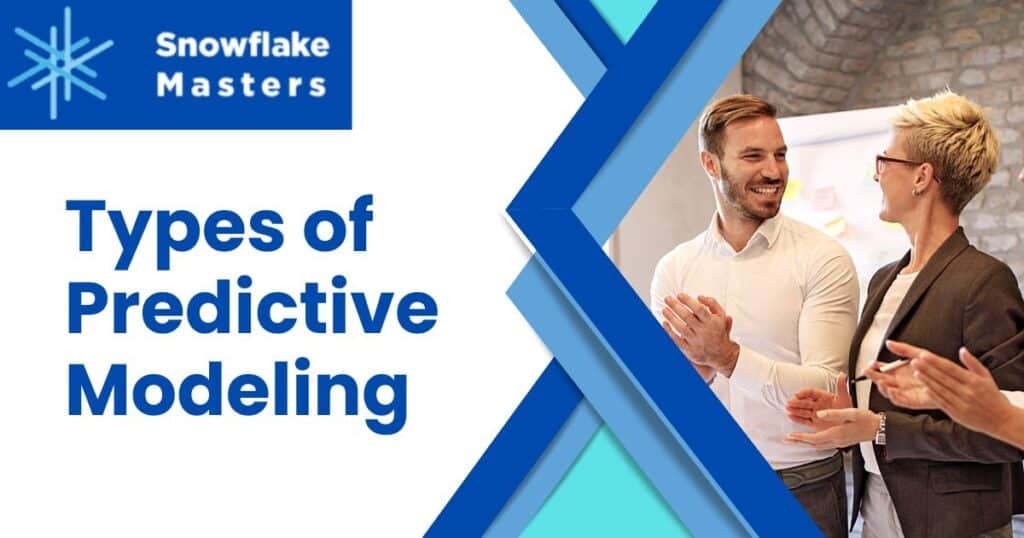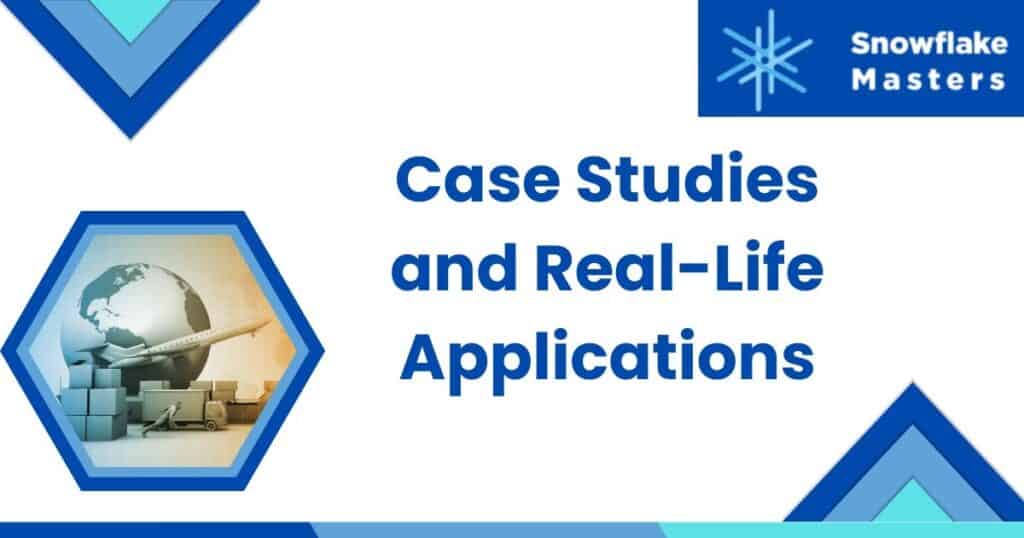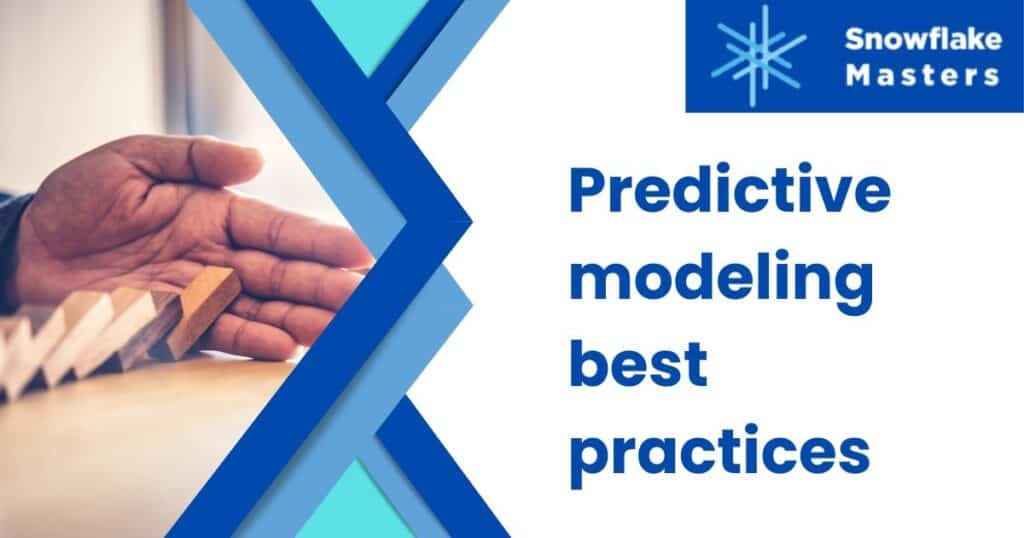Understanding the Basics: Types of Predictive Modeling Simplified
Types of Predictive Modeling

Predictive modelling is an essential tool that utilizes historical data and mathematical models to predict future events, behaviours, and outcomes. Predictive modelling has found practical applications in various industries, from healthcare to finance. This article briefly explains the basics of predictive modelling, including its different types, benefits, and limitations.
We explore the popular predictive modelling techniques, such as regression analysis, decision trees, neural networks, time series analysis, and random forests, along with their real-life applications and use cases. Ultimately, this article aims to simplify the complexities of predictive modelling by providing a comprehensive understanding of its fundamentals.
Table of contents
- What is Predictive Modeling?
- Predictive modelling techniques
- Types of Predictive Modeling
- Benefits and Limitations of Predictive Modeling
- Case Studies and Real-Life Applications
- Predictive modelling examples
- Predictive modelling best practices
- Conclusion
What is Predictive Modeling?
Predictive modelling is a technique that predicts future events based on patterns found in past data. It’s like having a smart helper that looks at old information and tells us what might happen next.
First, we gather information from the past, like sales or weather data. Then, using math and statistics, we find patterns in the information. These patterns help us see how different things are related and how they affect each other.
Once we know these patterns, we can create a model that helps us predict what could happen next. That is like a guide that helps us predict things we haven’t seen before.
Predictive modelling is useful in many industries. For example, it can help companies predict how much of a product they’ll sell, identify when someone might be committing fraud, or predict a person’s health problems.
It’s important to know that predictive modelling could be better. The accuracy of predictions can be affected by things like the quality of the data and the assumptions we make. We also need to think about ethical concerns when we use predictive models.
Another crucial aspect of predictive modeling is continuous learning and improvement. As new data becomes available, the models need to be updated and refined to maintain their accuracy. This process, known as model retraining, helps ensure that predictions remain relevant and accurate over time. Businesses and organizations must invest in monitoring their models and making necessary adjustments to adapt to changes in patterns and trends.
Collaboration between data scientists and domain experts is essential for successful predictive modeling. Domain experts provide valuable insights into the data and help identify the most important variables to consider. This collaboration ensures that the models are not only technically sound but also practical and useful in real-world scenarios. By working together, teams can create predictive models that provide meaningful and actionable insights.
Predictive modelling techniques
- Linear Regression: In this technique, we aim to find a linear relationship between a dependent variable and one or more independent variables. For example, we can predict a student’s grade in a course based on their study hours and past exam scores. By fitting a line that best represents the data, we can predict how their grade may change based on their study hours.
- Decision Trees: This technique uses a tree-like structure to make predictions by splitting the data based on different conditions. Every internal node represents a test on a certain variable, and each leaf node represents a prediction. Decision trees are intuitive and easy to understand, making them useful for classification tasks like predicting whether a customer will churn.
- Neural Networks: Inspired by the human brain, neural networks are models of layers of interconnected nodes (neurons). Each neuron performs a mathematical operation and passes the result to the next layer. Neural networks can learn from data and adjust the connection strengths between neurons to make predictions. They are highly effective in image recognition, natural language processing, and predictive analytics.
- Random Forest: This technique creates an ensemble of decision trees and combines their predictions to make a more accurate forecast. By training multiple decision trees on different subsets of the data, random forest reduces the risk of overfitting, which occurs when a model is too near fit to the training data and performs poorly on new data.
- Time Series Analysis: Time series analysis focuses on data that changes, like stock prices, temperature, or sales records. It involves analyzing the data’s patterns, trends, and seasonal variations to make future predictions. This technique is valuable for forecasting future values, such as predicting future sales based on past sales patterns.
- K-Nearest Neighbors: This technique considers the proximity or distance between data points to make predictions. Given a new data point, it looks at the K number of closest neighbours and assigns the most common class label among them. KNN is effective for classification and regression tasks and is known for its simplicity.
- These techniques provide a range of methods to analyze data, identify patterns, and make predictions in different fields. Depending on the specific problem and dataset, one or more techniques could be applied to develop accurate predictive models.
Types of Predictive Modeling
Regression Analysis
Regression analysis is a fundamental type of predictive modelling technique. It explores the relationship between a dependent variable and one or more independent variables. By analyzing the data, regression analysis helps identify the mathematical equation that best represents the relationship between these variables. This modelling technique is commonly used for forecasting, understanding cause-and-effect relationships, and estimating values.
Decision Trees
Decision trees are another popular predictive modelling technique. They use a tree-like structure to make decisions based on the available data. The model divides the data into smaller subsets by evaluating different features and creating rules for classification or prediction.
Decision trees are particularly appealing due to their simplicity and interpretability. They had widely used in various fields, including healthcare, finance, and marketing.
Neural Networks
Neural networks are complex and powerful predictive modelling techniques inspired by the human brain’s structure and functions. These models consist of interconnected nodes, or neurons, that process and transmit information.
Neural networks are adept at capturing intricate, non-linear relationships within the data, making them ideal for image recognition, natural language, speech processing & understanding tasks. They have revolutionized fields like computer vision, automated speech recognition, and sentiment analysis.
Time Series Analysis
Time series analysis is a specialized form of predictive modelling that deals with time-dependent data. It aims to forecast future values based on historical time series data. This technique finds patterns and trends within the data to make predictions.
Time series models are useful for analyzing and predicting stock prices, weather patterns, and financial data. Businesses leverage time series analysis for financial planning, demand forecasting, inventory management, and production forecasts.
Random Forests
Random forests are an ensemble learning technique combining multiple decision trees to make predictions. Each decision tree in the random forest had built using a random subset of features from the data. Random forests provide a more robust and accurate prediction by aggregating the predictions of these individual trees.
Random forests excel in handling large datasets, reducing overfitting, and handling feature interactions. They have found applications in various domains, including healthcare, retail, and finance.
Benefits and Limitations of Predictive Modeling
Predictive modelling offers several benefits, including:
- Improved decision-making and strategic planning: Predictive models provide valuable insights for making informed decisions and developing effective strategies.
- Increased forecasting and risk assessment accuracy: By analyzing historical data and identifying patterns, predictive models can accurately forecast future outcomes, reducing risks and uncertainties.
- Enhanced customer targeting and personalization: Predictive models help businesses analyze customer behaviour, segment markets, and deliver personalized recommendations, leading to improved user satisfaction and increased conversions.
- Cost savings by optimizing resources and reducing waste: Predictive models can help save costs and reduce waste by predicting resource requirements and optimizing processes.
However, it is essential to recognize the limitations of predictive modelling:
- Data quality: High-quality data is crucial for accurate predictions. Only accurate or complete data can lead to reliable models and accurate forecasts.
- Overfitting: Models that are overly complex or closely fit to the training data may fail to generalize well to new data, resulting in poor performance on unseen data.
- Ethical considerations: Predictive modelling raises ethical concerns about privacy, bias, and discrimination. It is essential to ensure fair and responsible use of predictive models, avoiding biases and safeguarding against unintended consequences.
Case Studies and Real-Life Applications
Predictive modelling has found practical applications in various industries. Here are a few examples:
- Healthcare: Predictive models analyze patient data and predict the likelihood of diseases and outcomes. That helps doctors in making informed decisions and delivering personalized treatments.
- Finance: Predictive models assist in credit scoring, fraud detection, and stock market predictions. Financial institutions rely on these models to mitigate risks and optimize investment strategies.
- Retail: Predictive models help retailers analyze customer bahaviour, segment their market, and make personalized recommendations. That enhances customer satisfaction and drives sales.
- Manufacturing: Predictive models optimize manufacturing processes, improve equipment maintenance, and reduce downtime. Manufacturers can minimize production disruptions and improve efficiency by forecasting maintenance needs and identifying potential issues.
- Transportation: Predictive models had leveraged to analyze traffic patterns, optimize route planning, and plan for supply chain disruptions. That helps businesses streamline their logistics operations and reduce costs.

Predictive modelling examples
Predictive modelling had widely used in many different fields. Let’s look at some examples :
- In healthcare, doctors can use predictive models to predict if a patient is at risk of developing a specific disease. These helps them to take preventive actions and provide early treatments if necessary.
- Banks and other financial institutions use predictive modelling to determine the likelihood of a customer defaulting on a loan in finance. These helps them make informed decisions and take appropriate actions to minimize risks.
- In retail, predictive modelling had used by marketers to forecast customer demand. By analyzing data, they can determine how much inventory should stock to meet customer needs and avoid shortages or excess stock.
- In insurance, predictive models aid in identifying fraudulent claims. Insurance companies can detect unusual patterns and behaviours, allowing them to take preventive measures and protect against fraudulent activities.
- In manufacturing, predictive models can predict equipment failures by analyzing data patterns. These help reduce downtime, plan maintenance schedules, and maximize productivity.
- In the automotive industry, manufacturers use predictive modelling to forecast vehicle failures. They can suggest maintenance schedules to minimize breakdowns and keep vehicles in good condition by analysing data.
These examples illustrate how predictive modelling supports decision-making in various sectors. By analyzing patterns in data and creating models, predictive modelling provides valuable insights to increase success rates and reduce risks associated with guesswork-based decisions.
Predictive modelling best practices
Predictive modelling has become an essential tool for businesses that want to make data-driven decisions based on trends and patterns from historical data. However, more than having a predictive model is needed, and following best practices is essential to ensure accurate and reliable insights.
Begin with businesses need to design metrics to guide the predictive model and understand the data they are working with. Keeping the initial model simple is important as the model had refined and complexity had added to ensure that predictions are accurate.
Model validation is a crucial step that ensures the model is reliable, consistent, and
can produce accurate predictions. Companies must collect, prepare, and preprocess relevant data with care since accuracy depends on the quality of the data. Creating new variables from existing data can also help glean deeper insights.
After selecting the appropriate model, validating and testing its performance is essential to ensure it can provide consistent and reliable predictions. Deploying the predictive model requires careful implementation. The key is monitoring and fine-tuning to ensure optimal performance.
The last step is to optimize the predictive model continually. As the data and model are updated, adjusting the model is important to ensure that it can generate accurate and relevant insights that can lead to better-informed decisions and improved outcomes. By adhering to best practices, businesses can benefit from more accurate insights, leading to better results and more efficient operations.

Conclusion
Predictive modelling is a powerful technique that enables businesses and organizations to make proper decisions and gain a competitive edge. By utilizing historical data and mathematical models, predictive modelling helps forecast future events and outcomes. This article explored different types of predictive modelling, including regression analysis, decision trees, neural networks, time series analysis, and random forests. Each technique has strengths and limitations, making them suitable for different scenarios and datasets.
As you delve into predictive modelling, remember to prioritize data quality, consider diverse perspectives, and address ethical concerns. Doing so can unlock the full potential of predictive modelling, making accurate predictions and propelling your organization towards success.
FAQ’s
Predictive modelling is a technique used to create mathematical models that predict future events or outcomes based on historical data. It utilizes statistical algorithms to identify patterns and relationships within the data.
There are several types of predictive modelling techniques, including regression analysis, decision trees, neural networks, time series analysis, and random forests.
Regression analysis is a predictive modelling technique that explores the relationship between a dependent variable and one or more independent variables. It helps identify the mathematical equation that best represents the relationship between these variables.
Decision trees are a predictive modelling technique that utilizes a tree-like structure to make decisions based on available data. The model divides the data into smaller subsets by evaluating different features and creating rules for classification or prediction.
Neural networks are complex models inspired by the human brain’s structure and functions. They consist of interconnected nodes, or neurons, that process and transmit information to make predictions. Neural networks are excellent at capturing non-linear relationships within data.
Time series analysis is a specialized predictive modelling technique for analyzing and forecasting time-dependent data. It identifies patterns and trends within the data to make predictions. Time series models had commonly used in financial analysis and weather forecasting.
Random forests are an ensemble learning technique that combines multiple decision trees to make predictions. Each decision tree had built using a random subset of features from the data. The predictions of these individual trees had aggregated to provide a more accurate prediction.
Predictive modelling offers several benefits, including improved decision-making, increased accuracy in forecasting, enhanced customer targeting, and cost savings through resource optimization.
Some limitations of predictive modelling include the need for high-quality data, the risk of overfitting, and ethical concerns related to privacy and bias. It is important to ensure data quality and fairness in using predictive models.
Predictive modelling finds applications in various industries. It had used in healthcare for disease prediction, finance for credit scoring, fraud detection, and stock market predictions, retail for customer behaviour analysis and personalized recommendations, manufacturing for process optimization, and transportation for traffic analysis and supply chain planning.
